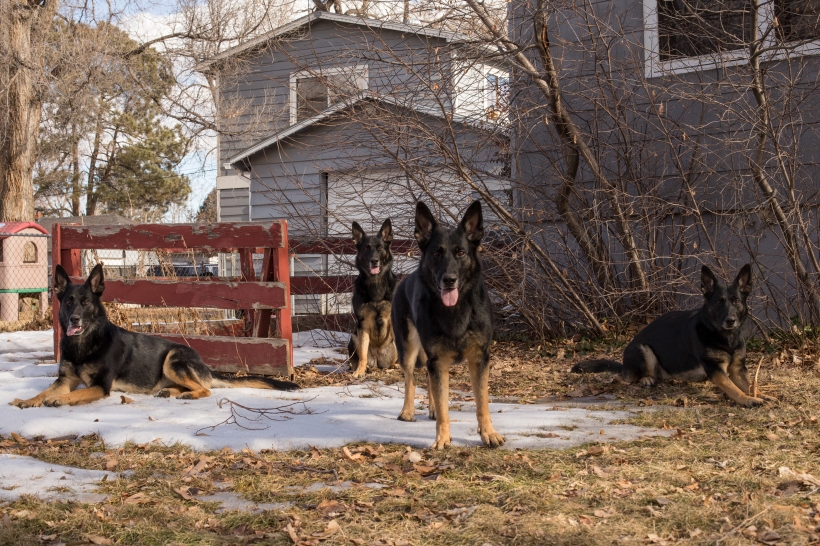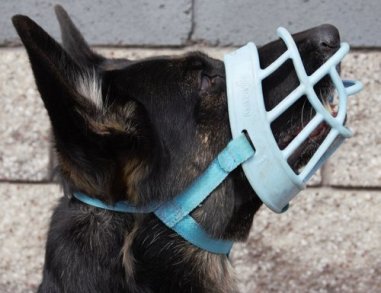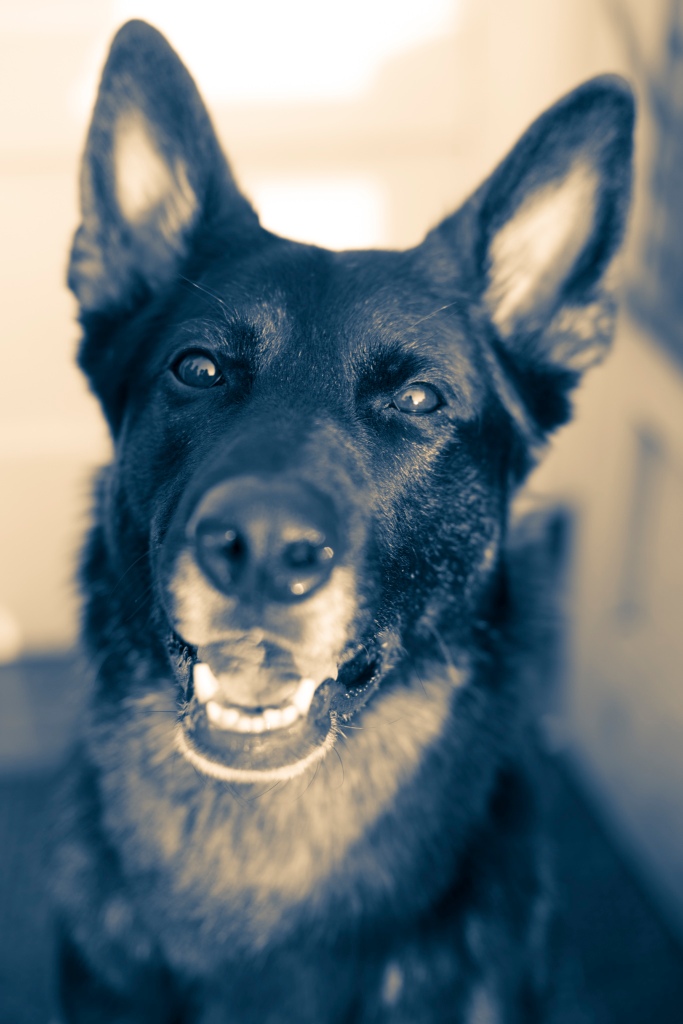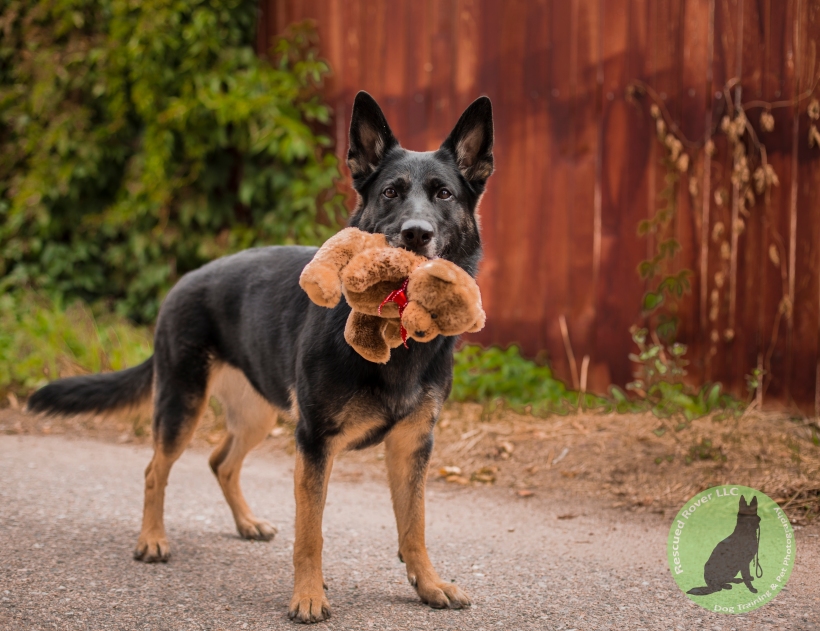This year in the United States, it is estimated that consumers will spend a total of 60.59 billion dollars on their pets. This number has risen consistently throughout the years and is astronomical when compared to the 17 billion dollars spent in 1994 (American Pet Products Association). Unfortunately, the number of dogs euthanized in shelters each year is also quite large. According to the ASPCA, 3.9 million dogs enter shelters each year, and 1.2 million (31%) of those dogs are euthanized during their stay. Many euthanized dogs failed behavior testing conducted by shelter staff and were deemed unavailable for adoption, resulting in euthanasia. Data supports that relying solely on behavior testing does not work, despite the fact that there are major benefits to behavior testing (S. L. Bennett). In order to solve this problem, alternative methods that give desired results in behavior need to be implemented, including multi-dimensional behavior programs in shelters, recruiting more foster families for shelters and rescues, and providing low-cost behavior and health care to dog owners before they make the decision to surrender a pet.
In order to improve behavior testing, it is important to understand why behavior testing is important. Shelters aim to adopt out dogs that are not only suited to the lifestyle of its adopters, but also to ensure the dogs are not a risk to public safety—a current public concern due to the heightened attention dog bites receive in the press and social media. When a dog is not a match to its prospective owner due to a lack of behavior testing, the results can be tragic. Take the case of 57-year-old Anthony Riggs, for example. Riggs, described as an animal lover, adopted a 5-year-old Rottweiler on the morning of November 12, 2015 from the Jackson-Madison County Rabies Control in Tennessee. The Rottweiler, a stray, was adopted out to Riggs without any behavior testing. Although it had shown no aggressive behavior towards the Rabies Control staff, Riggs was mauled to death by the recently adopted Rottweiler. His body was found on the evening of the day of the adoption. Several other people were bitten before the dog was fatally shot by police officers (Moye). To help prevent similar tragedies, the results of a series of behavioral tests are often used to determine whether a dog is adoptable, and, if so, to what type of family dynamic. There are many different ‘temperament-testing’ programs used across the United States. The two most commonly used include Sue Sternberg’s Assess-A-Pet program and Emily Weiss’ Safety Assessment for Evaluating Rehoming (SAFER) program.
According to its creator Sue Sternberg, the goal of the Assess-A-Pet program is “to find the gems that don’t often come in gemlike packages” (Robertson). The process takes about fifteen minutes to complete and involves a series of exercises that hope to predict a dog’s social behavior and potential for future aggression in various scenarios. The person administering the test starts by standing in front of the dog’s kennel and maintains neutral eye contact with the dog for five seconds. The dog is then removed from the kennel on a leash and ignored for thirty seconds, followed by ten seconds of friendly speech and three strokes of a hand along its back. The teeth are then examined by lifting the lips five times, held for five seconds each time, followed by stroking the dog’s back, lifting a back leg, and touching a foot, the tail, and ears. The evaluator then uses a towel to wipe the dog’s entire body, tugs on the collar, applies pressure to the shoulders, and gives the dog a hug. Next, arousal is evaluated by engaging in play behavior. Food aggression and guarding behaviors are examined by the Assess-a-Hand—a fake plastic hand that is used to handle the dog’s food and toys. A new person then enters the room, gives the dog ten seconds of eye contact, reaches for the dog, and kneels to solicit attention. Finally, aggression towards other dogs is tested by introducing it to an unknown dog. Both dogs remain on leash until the test is completed (S. L. Bennett).
The ASPCA SAFER Aggression Assessment is another commonly used program when helping determine adoptability in shelter dogs. According to the ASPCA, the test is “a predictive, consistent method for evaluating the probability of canine aggression in individual dogs” (ASPCA). The test takes approximately ten minutes per dog, and begins by holding the dogs head still and looking into its eyes using neutral eye contact. Then, the evaluator moves their hand in a kneading motion along the dog’s back, hips, and shoulders three times. This is followed by an attempt to engage the dog in exciting play to test arousal and overall excitability levels. Next, the evaluator says “squeeze” aloud and squeezes in between the dog’s toes multiple times. Food guarding and possession is tested using the same Assess-a-Hand as described above. Finally, the test is completed after a neutral dog is brought in on leash and the dog’s reaction is noted (S. L. Bennett).
While there are benefits to the tests, there are many issues surrounding the way animal shelters currently evaluate behavior. Behavior testing in its current state gives only a partial look on what behavior a dog may display upon leaving the shelter. According to Barbara Robertson, a journalist for online magazine The BARk, the tests are not only unfair, but also help shelters boost their adoption statistics as only dogs that pass the tests are included in their adoption and euthanasia figures. This, she states, does not give communities a clear picture of the dire overpopulation issue in shelters. Additionally, dogs in shelters are frequently too stressed to react as they would once they have been in a new home for a few weeks. Many types of aggression, including food aggression, aggression towards strangers and/or children, as well as resource guarding may not be exhibited until weeks after a dog is adopted. Dogs with food or territorial aggression may pass those tests, for example, because they are refusing food due to stress and do not feel the need to protect their current environment.
A dog that demonstrates food guarding is often deemed unadoptable and automatically condemned to euthanasia. A study by the ASPCA discovered that 34% of shelters make no attempt to correct this behavior before euthanizing. In addition, though many shelters consider food guarding sufficient reason for terminating a dog’s life, the ASPCA found that most food-guarding behavior is eradicated within three months of adoption. This study took place at the Wisconsin Humane Society between April 2004 and September 2006, and focused on food-guarding from humans only. The study’s objectives were to identify dogs with food-guarding behaviors, place those dogs into new homes without prior training, record any guarding issues within three months, and determine how guarding behavior was handled in other shelters in the United States. Out of 6,603 adult dogs adopted, only 96 dogs were enrolled in the guarding program. Enrolled dogs were tested using the SAFER assessment and showed aggression only during the food-guarding test. Pit bulls and Rottweilers were not eligible for the study, per the shelter’s requirements; also ineligible were dogs that were determined to be too dangerous to participate. Adopters were instructed to follow a specific protocol that required they offer food at all times, feed part of the meal in an enrichment device, keep feeding-time calm, ask the dog to sit before feeding, avoid conflict with the dog, and allow the dog to eat without disturbance. They were additionally instructed to randomly drop a treat into the bowl as they walked by. A follow-up was done at three days, three weeks, and three months after adoption. Thirty-one percent of adopters were unable to be reached for follow-up and six dogs were returned to the shelter within three months. Unfortunately, the compliance rate with adopters was low and dropped as the study continued. Almost all of the adopters took away the food bowl during meal times by month three, few were using enrichment devices, and many were no longer asking for a sit before feeding. Despite this, only six dogs demonstrated non-food guarding behaviors within the first three weeks, and of those six only one showed food guarding. By month three, that dog was no longer guarding food (Mohan-Gibbons). The study concluded that euthanizing dogs based solely on food-guarding results is unnecessary as many dogs will not exhibit the same behavior once adopted.
As the unreliability of behavior testing continues to result in the euthanasia of many potentially adoptable dogs, some shelters and rescue groups have taken new steps in an attempt to save more dogs. Bound Angels, an animal advocacy group dedicated to “bringing attention to the shelter crisis and implementing proven solutions”, created its ‘Behavior Assessment and Reactivity Checklist’ (B.A.R.C.) in order to address the current issue. B.A.R.C. allows a person to “fairly interact with a dog in a normal manner”, and the results of the checklist declare strong and weak points in the dog’s personality (Bound Angels). These results are rated using colors — Red, Yellow, and Green– and are available to both staff and potential adopters. A poor rating, however, does not condemn a dog to euthanasia. Instead, options are given that assist with rehabilitation and reassessment in the future after behavioral improvements have occurred. While it is still difficult to assess a dog’s future behavior in a shelter environment, the B.A.R.C. checklist is a step forward in the correct direction.
Another way to correct the current problem is incorporating comprehensive behavior programs into shelters. Dr. Sheila Segurson D’Arpino– a specialist in Veterinary Medicine– conducted an in-depth study of behavioral assessments during the research portion of her residency at UC Davis School of Veterinary Medicine Maddie’s Shelter Medicine Program. After her research, D’Arpino developed a list of steps necessary to successfully operate a shelter behavior program. The list includes: an appropriate behavior assessment test, a questionnaire for prior owners upon relinquishment of a dog, shelter behavioral guidelines, a professional behaviorist available to staff, a foundation behavior and training program covering basic obedience and house manners, a program for behavior modification, adoption screening, behavioral counseling before and after adoption, and post-adoption follow up for new adopters. The guidelines provide a detailed behavioral plan for every pet in the shelter– under the supervision of a committee– which gives descriptions of each step in the behavior program. Each pet is assessed for behavioral problems and problems classified as manageable, treatable, or untreatable. Dogs with no behavioral issues or mild problems enroll in a foundation behavior and basic training program, while dogs with more serious issues undergo behavior modification training performed by experienced and reliable staff members. Once completed, those dogs are reevaluated and euthanasia is performed if they did not respond to training or drug therapy. Adoption screening reduces the number of returns to the shelter by matching an adopter with a dog that fits their lifestyle and is compatible in their home. Once an appropriate dog is found, the adopter undergoes adoption counseling in order to ensure that they understand the necessary training and management requirements. Counseling remains available post-adoption and at least one follow-up is performed after the dog leaves the shelter (D’Arpino).
In addition to comprehensive shelter programs, utilizing rescue groups as much as possible allows for a better determination of behavior. Rescue groups operate using foster homes– volunteers who open up their homes to dogs in need– for dogs with behavioral or medical issues that shelters are unable to help. These non-profit groups provide medical treatment, behavior training, and shelter for the dogs in their care. The foster home is responsible for housing and caring for the dog until they find a family to adopt them. Unlike behavior tests in shelters, foster homes are able to view a larger portion of a dog’s behavior on a day-to-day basis. While many dogs are still initially stressed in the new environment, they tend to show more of their personality once in a home environment. Many of the dogs in foster homes are tested around children, other pets, strangers, and other items typically experienced post-adoption. Unfortunately, as is the case in shelters, foster homes are a limited resource. Since all fosters work on a volunteer basis and many provide the food and other care items for their foster dog, finding enough homes willing to take in all of the dogs with behavioral issues is an impossible task. However, the more community outreach and funding that is done promoting rescues and recruiting volunteers, the more dogs are saved.
Finally, funding low-cost training and medical treatment options for communities help keep more dogs out of the shelters to begin with. A high number of dogs enter shelters as young adults with bad behavior that is completely preventable. Dog training classes teach basic manners such as sit, down, stay, and come, and also provide impulse control exercises such as leave it, politely greeting guests, and calm leash walking. Adult dogs that have no basic training often exhibit undesirable behaviors that result in their relinquishment to a shelter. Low-cost training options geared toward owners who want to solve their dog’s behavioral problems will result in fewer relinquishments, and low-cost puppy programs will help prevent behavior problems as the dog matures. Additionally, many dogs are surrendered due to unwanted litters of puppies, health problems, and injuries that owners cannot fix due to the expense involved. Low-cost medical treatment and sterilization clinics not only keep dogs in their homes, but also reduce the total number of unwanted litters. Bad Rap, a rescue and pit bull advocacy group in California, offers all of these low-cost resources to families in need. Bad Rap’s spay and neuter clinic operates on a ‘pay what you can afford’ system in order to fight pet overpopulation, behavioral problems, and health concerns associated with remaining intact. Bad Rap also offers free microchipping and vaccinations as well as training classes that prioritize helping train dogs at risk for relinquishment. In addition, support is given to those facing homelessness, are struggling to find a place to rent, find pit bulls they cannot keep, need financial help with veterinary care, or cannot afford pet food (BadRap.org). This type of community support for dog owners who truly want to keep their pets is a key link in reducing shelter population numbers.
Although the number of dogs in shelters is overwhelming, reducing the number of dogs euthanized in shelters is possible. Shelter behavior testing is evolving, and, if implemented with the goal of gaining consistently accurate results, euthanasia rates will drop. Behavior testing should not be the determining factor of a shelter dog’s future, however. Focus should be given to creating comprehensive, multi-dimensional behavior programs in every shelter. Those programs will help solve behavioral problems and provide enrichment for dogs in shelters. Additionally, community outreach regarding rescues and fostering will free up resources for animal shelters by reducing their population, and will provide better evaluations of an individual dog’s behavior. In addition, low-cost medical treatment is necessary for families who want to keep their dogs but cannot afford treatment or basic medical care. Finally, affordable training options for low-income families should be required in every community in order to provide foundation training and behavior modification support to those in need. If these steps are followed, more dogs will have the opportunity to make it out of animal shelters and into forever homes.
References
American Pet Products Association. “Pet Industry Market Size & Ownership Statistics.” n.d. APPA. 8 December 2015.
ASPCA. “Pet Statistics.” n.d. Shelter Intake and Surrender. 29 Nov. 2015.
—. “SAFER.” n.d. ASPCA Professional. Web. 2 Dec. 2015.
BadRap.org. Resources for SF Bay Area Dog Owners in Need . 2015. Web. 9 Dec. 2015.
Bennett, Pauleen, et al. Reliability, validity and feasibility of existing tests of canine behaviour. 2009. Web. 17 Nov. 2015.
Bennett, Sara L. “Temperament Tests: What we do and do not know about them.” n.d. Purdue Animal Behavior Clinic for Maddie’s Fund. Web. 28 Nov. 2015.
Bound Angels. Behavior Assessment & Reactivity Checklist. n.d. Web. 15 Nov. 2015.
D’Arpino, Sheila Segurson. Behavioral Assessment in Animal Shelters. 2007. Web. 18 Nov. 2015.
Mohan-Gibbons, Heather, Emily Weiss, and Margaret Slate. “Preliminary Investigation of Food Guarding Behavior in Shelter Dogs in the United States.” Animals (2012): 1-16. Web.
Moye, David. Man Killed By Rottweiler He Adopted Hours Earlier. 2015 17 Nov. Web. 18 Nov. 2015.
Robertson, Barbaera. “Dog Is in the Details.” n.d. The BARk. Web. 1 Dec. 2015.




















 Jolly Pets Teaser Ball
Jolly Pets Teaser Ball


